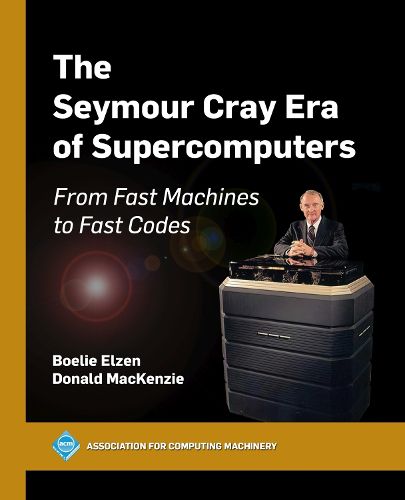Readings Newsletter
Become a Readings Member to make your shopping experience even easier.
Sign in or sign up for free!
You’re not far away from qualifying for FREE standard shipping within Australia
You’ve qualified for FREE standard shipping within Australia
The cart is loading…






This title is printed to order. This book may have been self-published. If so, we cannot guarantee the quality of the content. In the main most books will have gone through the editing process however some may not. We therefore suggest that you be aware of this before ordering this book. If in doubt check either the author or publisher’s details as we are unable to accept any returns unless they are faulty. Please contact us if you have any questions.
This book describes the development and use of supercomputers in the period 1960 - 1996, a time that can be called the Seymour Cray Era. For more than three decades, Cray's computer designs were seen as the yardstick against which all other efforts were measured. Initially, this yardstick was sheer computing speed. However, the supercomputer world gradually became more complex and other factors became equally important.The initial development of supercomputers was commissioned and financed by the Los Alamos and Lawrence Livermore National Laboratories, which had huge computational needs in connection with nuclear weapons development. The computers designed by Cray satisfied those needs, while these computers were also sold to a few dozen other big research organizations and weather agencies. From the 98 s, a variety of companies started to compete with the Cray designs by offering supercomputers that used a new architectural approach, MPP: massively parallel processing. This new architecture, based on using tens of thousands of relatively simple microprocessors, subsequently began to dominate high-performance computing and marked the end of the Seymour Cray Era.
This book is important reading for anyone working in the area of high-performance computing, providing essential historical context for the work of a legendary pioneer and the computers he became famous for designing. It will also be valuable to students of computing history and, more generally, to readers interested in the history of science and technology. For advanced students, the book illustrates how innovation in its very essence is a socio-technical process: not just a matter of developing the "best technology," but also of making appropriate choices concerning the interaction of human and technical factors in product design.
$9.00 standard shipping within Australia
FREE standard shipping within Australia for orders over $100.00
Express & International shipping calculated at checkout
This title is printed to order. This book may have been self-published. If so, we cannot guarantee the quality of the content. In the main most books will have gone through the editing process however some may not. We therefore suggest that you be aware of this before ordering this book. If in doubt check either the author or publisher’s details as we are unable to accept any returns unless they are faulty. Please contact us if you have any questions.
This book describes the development and use of supercomputers in the period 1960 - 1996, a time that can be called the Seymour Cray Era. For more than three decades, Cray's computer designs were seen as the yardstick against which all other efforts were measured. Initially, this yardstick was sheer computing speed. However, the supercomputer world gradually became more complex and other factors became equally important.The initial development of supercomputers was commissioned and financed by the Los Alamos and Lawrence Livermore National Laboratories, which had huge computational needs in connection with nuclear weapons development. The computers designed by Cray satisfied those needs, while these computers were also sold to a few dozen other big research organizations and weather agencies. From the 98 s, a variety of companies started to compete with the Cray designs by offering supercomputers that used a new architectural approach, MPP: massively parallel processing. This new architecture, based on using tens of thousands of relatively simple microprocessors, subsequently began to dominate high-performance computing and marked the end of the Seymour Cray Era.
This book is important reading for anyone working in the area of high-performance computing, providing essential historical context for the work of a legendary pioneer and the computers he became famous for designing. It will also be valuable to students of computing history and, more generally, to readers interested in the history of science and technology. For advanced students, the book illustrates how innovation in its very essence is a socio-technical process: not just a matter of developing the "best technology," but also of making appropriate choices concerning the interaction of human and technical factors in product design.